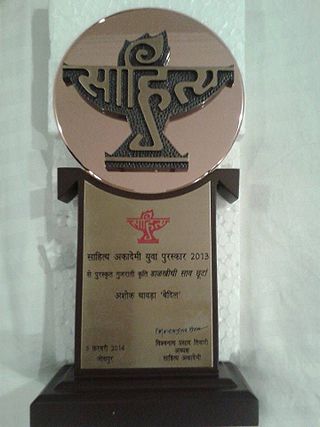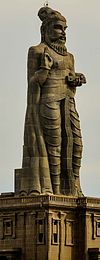Lists of television channels include:

Languages spoken in the Republic of India belong to several language families, the major ones being the Indo-Aryan languages spoken by 78.05% of Indians and the Dravidian languages spoken by 19.64% of Indians; both families together are sometimes known as Indic languages. Languages spoken by the remaining 2.31% of the population belong to the Austroasiatic, Sino–Tibetan, Tai–Kadai, and a few other minor language families and isolates. According to the People's Linguistic Survey of India, India has the second highest number of languages (780), after Papua New Guinea (840). Ethnologue lists a lower number of 456.
There are currently 900 permitted private satellite television channels in India as of February 2021. Numerous regional channels are available throughout India, often distributed according to languages.

This is a list of articles about poetry in a single language or produced by a single nation.

All India Radio (AIR) aka Akashvani, is an Indian state-owned public radio broadcaster founded by the Government of India, owned by the Ministry of Information and Broadcasting and one of Prasar Bharati's two divisions. It was established in 1936. It is the sister service of Prasar Bharati's Doordarshan, an Indian television broadcaster. Headquartered in the Akashvani Bhavan building in New Delhi, it houses the Drama Section, the FM Section, and the National Service, and is also home to the Indian television station Doordarshan Kendra, (Delhi).

Saurashtra is an Indo-Aryan language spoken primarily by the Saurashtrians of Southern India who migrated from the Lata region of present-day Gujarat to south of Vindhyas in the Middle Ages.

The Sahitya Akademi Award is a literary honour in India, which the Sahitya Akademi, India's National Academy of Letters, annually confers on writers of the most outstanding books of literary merit published in any of the 22 languages of the 8th Schedule to the Indian constitution as well as in English and Rajasthani language.
Tatsama are Sanskrit loanwords in modern Indo-Aryan languages like Assamese, Bengali, Marathi, Nepali, Odia, Hindi, Gujarati, and Sinhala and in Dravidian languages like Tamil, Kannada and Telugu. They generally belong to a higher and more erudite register than common words, many of which are directly inherited from Old Indo-Aryan (tadbhava). The tatsama register can be compared to the use of loan words of Greek or Latin origin in English.

The Indian 10-rupee banknote is a common denomination of the Indian rupee. The ₹10 note was one of the first notes introduced by the Reserve Bank of India as a part of the Mahatma Gandhi Series in 1996. These notes are presently in circulation along with the Mahatma Gandhi New Series which were introduced in January 2018, this is used alongside the 10 rupee coin.

Lists of Sahitya Akademi Award winners cover winners of the Sahitya Akademi Award, a literary honor in India which Sahitya Akademi, India's National Academy of Letters, annually confers on writers of outstanding works in one of the twenty-four major Indian languages. The lists are organized by language.

Vikaspedia is an online information guide launched by the Government of India. The website was implemented by C-DAC Hyderabad and is run by the Department of Electronics and Information Technology, Ministry of Communications and Information Technology. It is built as a portal for the social sectors, and offers information in 23 languages: English, Assamese, Telugu, Hindi, Bengali, Gujarati, Kannada, Malayalam, Tamil, Bodo, Dogri, Sanskrit, Kashmiri, Konkani, Nepali, Odia, Urdu, Maithili, Meitei, Santali, Sindhi, Punjabi, and Marathi.

The Eighth Schedule to the Constitution of India lists the official languages of the Republic of India. At the time when the Constitution was enacted, inclusion in this list meant that the language was entitled to representation on the Official Languages Commission, and that the language would be one of the bases that would be drawn upon to enrich Hindi and English, the official languages of the Union. The list has since, however, acquired further significance. The Government of India is now under an obligation to take measures for the development of these languages, such that "they grow rapidly in richness and become effective means of communicating modern knowledge." In addition, candidates sitting for an examination conducted for public service are entitled to use any of these languages as a medium to answer the paper.

The Yuva Puraskar, also known as Sahitya Akademi Yuva Puraskar, is a literary honor in India which Sahitya Akademi, India's National Academy of Letters, annually confers on young writers of outstanding works in one of the 24 major Indian languages. Instituted in 2011, it recognises young writers under 35, with the aim of encouraging and promoting young writers. It comprises a cash prize of Rs. 50,000 and an engraved copper plaque.

The Indian 1-rupee note (₹1) is made up of hundred 100 paise as ₹1 = 100 paise. Currently, it is the smallest Indian banknote in circulation and the only one being issued by the Government of India, as all other banknotes in circulation are issued by the Reserve Bank of India. As a result, the one rupee note is the only note bearing the signature of the Finance Secretary and not the Governor of the RBI. Predominantly pinkish green paper is used during printing.

The Indian 5-rupee note is the second smallest Indian note in circulation. The Reserve Bank of India introduced the 5 rupee banknote as part of the Mahatma Gandhi Series in 1996. The printing of notes in the denominations of ₹5, however, has been discontinued as these denominations have been coinised but still these notes are valid legal tender in India.

Makers of Indian Literature is a series of biographical monographs published by Sahitya Akademi, India's National Academy of Letters.

Sahitya Akademi Translation Prize or Sahitya Akademi Prize for Translation is a literary honour in India, presented by Sahitya Akademi, India's National Academy of Letters, given to "outstanding translations of creative and critical works" in 24 major Indian languages such as English, Rajasthani, Punjabi and the 22 listed languages in the Eighth Schedule of the Indian Constitution recognised by the Sahitya Akademi, New Delhi.

The Bal Sahitya Puraskar also known as Sahitya Akademi Bal Sahitya Puraskar,is a literary honour in India, which the Sahitya Akademi, India's National Academy of Letters, annually confers on writers for their contribution in the field of Children's literature in any of the 22 languages of the 8th Schedule to the Indian constitution as well as in English and Rajasthani language. Instituted in 2010, it comprises a cash prize of Rs. 50,000 and an engraved copper plaque.















